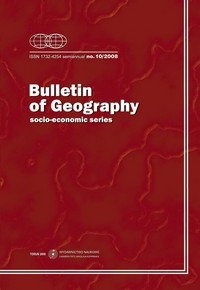Germany - Two Demographically Different States?
DOI:
https://doi.org/10.1515/v10089-008-0015-5Keywords
GDR, FRG, demographic structures, borderAbstract
The paper is an attempt of an answer how belonging to different political, economical and cultural structures has influenced diverse population processes and structures and their spatial diversity. As an example to the research of these phenomena there was chosen Germany that until 1990 were two separated socio-political and economical formations (the German Democratic Republic (GDR) and the Federal Republic of Germany FRG). This state, with a population number about 82 millions presently, as it turns out - besides passage of time - is characterized all the time by some diversity of procreation behaviors, population processes and structures in the Eastern (Ost) and the Western part (West) of Germany. It is claimed, the structures are going to some similarities, but the 15 years period (1990-2005) was too short to level all stated demographical differences and trends (1).References
Birg, H. 2002: Die demographische Zeitwende, Der Bevölkerungsruckgang in Deutschland und Europa, München: Verlag C. H. Beck.
Mai, R. 2006: Die alterselektive Abwanderung aus Ostdeutschland. In: Bundesamt für Bauwesen und Raumordnung, Raumforschung und Raumordnung, Heft 5, 64. Jahrgang, Bonn: Carl Heymanns Verlag, pp. 355-369.
Szymańska, D. and Środa, S. 2006: Le proces sus de viellissement de la population en Allemagne dans les annees 1995-2003. In Dumont, G. F. editor, Les territoires face au viellissement en France et en Europe, Paris: Ellipses Edition, pp. 297-305.
Środa, S. 2003: Socio-demographic problems in Berlin in the years 1990-2002, Bulletin of Geography (socio-economic series), No 2, Toruń: Nicolaus Copernicus University Press, pp. 123-129.
Downloads
Published
How to Cite
Issue
Section
License
Title, logo and layout of journal Bulletin of Geography. Socio-economic Series are reserved trademarks of Bulletin of Geography. Socio-economic Series.Stats
Number of views and downloads: 461
Number of citations: 0



